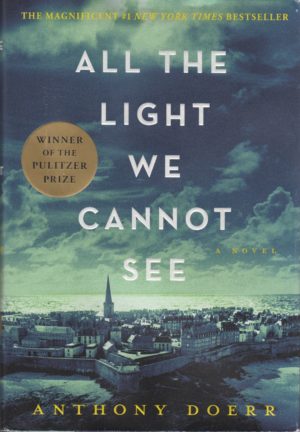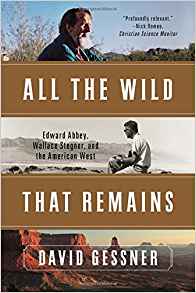
All the Light We Cannot See by Anthony Doerr (2014. Scribner. ISBN 978-1-4767-4658-6)
A story of contrasts. A German boy (Werner) whose life revolves around his ability to tinker with electronic gadgetry; his eyes and hands quick and easy with tools, his mind adept at solving problems, joins one of the youth movements in Hitler’s Germany and becomes a person that his sister, with whom he shares a bleak existence in an orphanage, barely recognizes. Marie-Laure, a blind Parisian girl, lives a life of comparative luxury despite her infirmity, until she and her father are forced to flee France’s capital city, taking refuge in the fortress town of Saint-Malo. Marie-Laure’s ingenious father works as a locksmith for a museum and, as they move from city to town, uses his considerable model-making skills and locksmithing ability to craft models of Paris and Saint-Malo that allow the girl to travel within both in relative safety. But the German Wermacht is on the march and with the invasion of France, eventually the paths of the two young protagonists cross. Doerr won the Pulitzer for this unique and creative look at two lives tossed into the maelstrom of a cataclysmic conflict and it was much deserved. One of the best books I’ve read in the past decade, here’s a sample of the author’s voice and his fine prose:
Her father says their weapons gleam as if they have never been fired. He says their boots are clean and their uniforms spotless. He says they look as if they have just stepped out of air-conditioned train cars…Curfews are installed. Music that can be heard outdoors is banned. Public dances are banned. The country is in mourning and we must behave respectfully, announces the mayor. Though what authority he retains is not clear. Every time she comes within earshot, Marie-Laurie hears the phsst of her father lighting another match. His hands flutter between his pockets…He flips the locking clasp on his tool case over and over until Marie-Laure begs him to stop.
If you enjoyed The Nightengale, or my historical novel of the Finns and Estonians during WW II (Sukulaiset: The Kindred), this is the sort of well-crafted, highly charged prose that you will devour.
5 stars out of 5. A magnificent work.

All the Wild that Remains by David Gessner (2016. Norton. ISBN 978-0393352375)
Part memoir. Part travelogue. Part biography. Part environmental treatise. This well drawn work of non-fiction is the perfect reading companion for anyone traveling to Las Vegas, Phoenix, or Denver, or anyone simply interested in the environmental legacy of the American West. Gessner examines contemporary issues like land use, water rights, fracking, and wilderness in the context of the writings of Ed Abbey and Wallace Stegner, two revered Western writers. Both men, despite enormous differences in their approaches to environmental activism, retain dedicated followers decades after their respective deaths. Gessner inserts himself in the middle of the debate as to which approach: “monkey wrenching” (environmental sabotage; Abbey’s preferred method of achieving change), or philosophical and political dissertation (Stegner’s choice), is the more effective in terms of halting the degradation of Western resources and lands. This is a must read for fans of both writers because Gessner’s challenge, which he accepts and does an admirable job of meeting, is to consider present-day issues in the context of history and geographic reality, all the while merging the theoretical with the pragmatic. A good sign that the author is on the right track in pushing readers out of their comfort zones is this: I’ve never read Abbey, though I’ve read Stegner (he’s a fellow Eagle Scout, after all!) both his fiction (Angle of Repose) and his non-fiction (Beyond the Hundredth Meridian). Because of Gessner’s excellent writing on the similarities and differences between these two authors of the West, I’m now one-third into Abbey’s classic, Desert Solitare. That fact alone should compel you to pick up a copy of All the Wild that Remains.
4 stars out of 5.
Peace.
Mark


